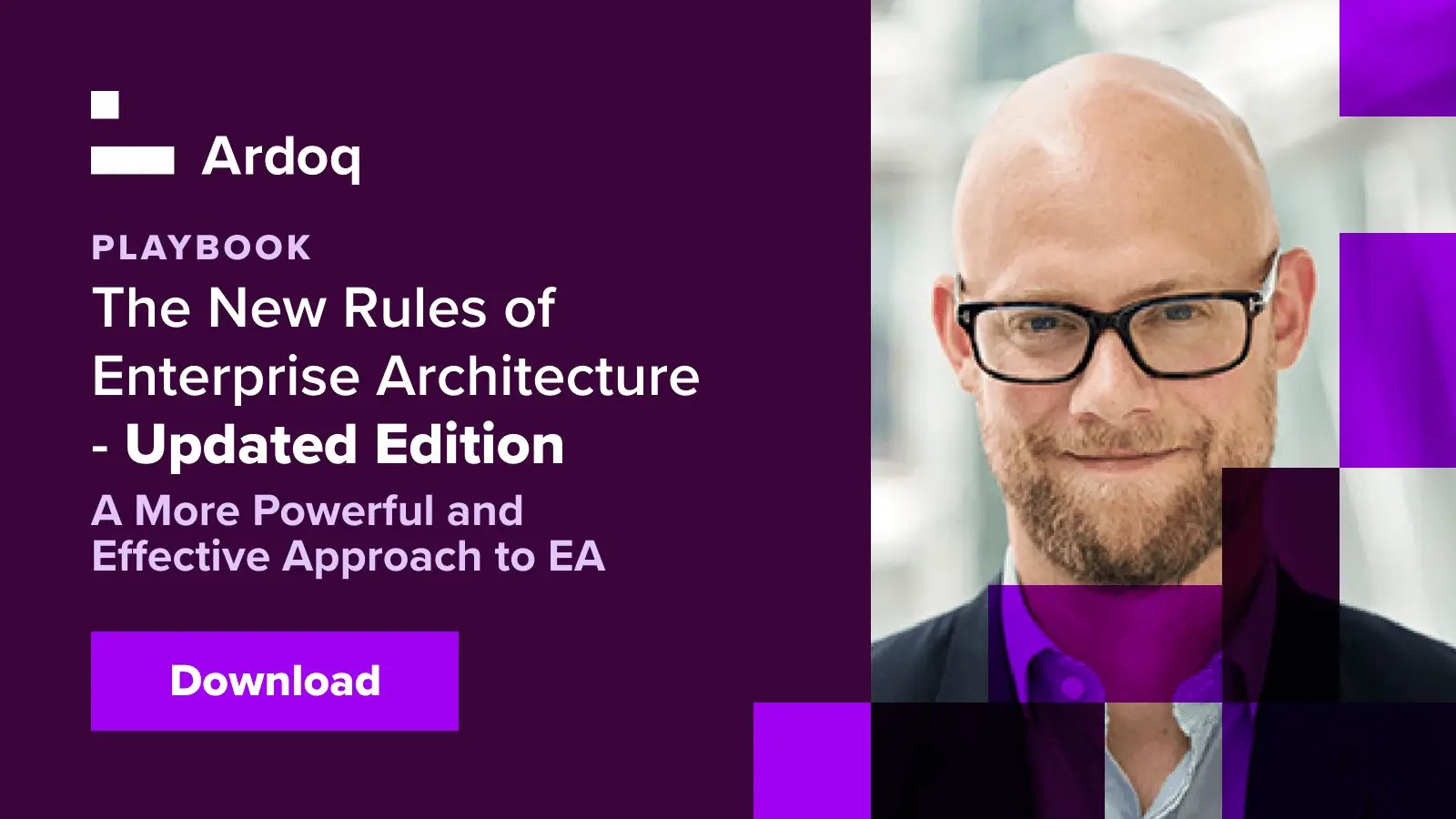The complexity of modern enterprises is introducing more technological risk than ever. Enterprises need to be sure they have effective technology risk mitigation plans in place to effectively manage and control this risk. However, doing this effectively and efficiently poses a challenge that spans both functions and teams across the organization.
What is Technology Risk?
Technology risk is the potential for a business to be negatively affected by its use of technology. This could include data, applications, or physical hardware.
Technology Risk Examples
There are a number of ways to think about and categorize technology risk. We can split it into groups according to the type of threat, e.g. security or system failure, or according to what it affects, such as data risk or hardware risk. Many technology risk examples span several different categories; for example, data risk can occur in many different ways. However, perhaps the best way to understand technology risk is to cite some real incidents.
Cybersecurity risk: Britain’s National Health Service was targeted in 2017 by a worlwide ransomware cyberattack called WannaCry. The ransomware disrupted operations by encrypting a host computer and demanding payment before it could be used. The creators also threatened to release the data publicly unless the ransom was paid. In response, many parts of the NHS had to shut their networks down to avoid being attacked. The attack was estimated to have cost the NHS £92 million.
Software failure: Thousands of businesses running Windows, including airports, banks, hotels, and hospitals, were disrupted across the world in 2024 by a faulty update for the security software CrowdStrike. The buggy update caused these systems to crash without the ability to restart. Even when an update was pushed out within hours to roll back the changes, outages persisted due to affected computers needing to be fixed manually. It was estimated that the top 500 US companies by revenue, excluding Microsoft, faced nearly $5.4bn (£4.1bn) in financial losses because of the outage.
Hardware failure: In 2020, the Tokyo Stock Exchange (TSE) in Japan was brought to a complete standstill by a hardware failure lasting an entire day. A hardware problem with its “Arrowhead” trading system, followed by a subsequent failure to switch to a backup, resulted in the worst-ever outage for the exchange, leaving investors unable to buy shares as the exchange had to halt trading for an entire day.
The exchange is the world’s third-largest equity market and home to the shares of major brands, including Honda, Nissan, Hitachi, and Canon. Smaller exchanges in Nagoya, Fukuoka, and Sapporo, which relied on the TSE's technology, were also affected by the outage.
Types of Technology Risk
Technology risk can come from many different sources. Here are some examples:
- Cybersecurity: Cybersecurity risk concerns the chance of an organization experiencing cyberattacks or a data breach. Hacking or viruses could result in sensitive information being exposed to those outside the organization who may wish it harm. Malware could slow the organization’s operations down.
- Hardware and software failure: This could occur through power loss, physical damage, or data corruption. It could result in the inability to access key systems. If customer data is lost, this could cause reputational damage and loss of trust.
- Software or application risk: This is risk from the development and use of software, such as bugs, security vulnerabilities, or compatibility issues. These can disrupt operations or open the organization to cybersecurity threats. This type of risk could include legacy systems that are no longer supported by the manufacturer or new systems and technologies that may be difficult to implement because they are still being developed.
- Compliance risk: This risk arises from a company’s data or telecommunications practices failing to be in line with regulations or the law. This is particularly important in heavily regulated industries such as financial services and healthcare.
What is Technology Risk Mitigation?
Technology risk mitigation is the process of identifying, assessing, and taking steps to reduce or eliminate potential risks associated with the adoption and use of technology within an organization. As organizations become more reliant on technology, the risks associated with it also multiply. These risks can vary widely, from security breaches to system failures, data loss, compliance violations, and more. To mitigate these risks, leveraging Enterprise Architecture (EA) knowledge is critical.
What Are Four Approaches to IT Risk Management?
Once a technology risk has been identified, there are a number of ways to address it, depending on the nature of the threat and its severity.
Risk Avoidance
Some risks can simply be avoided with the right planning and strategy. Alternatively, it may be decided that the potential impact of a risk is so severe that it simply cannot be allowed to happen.
Risk Reduction
Risk reduction seeks to reduce the likelihood of a risk occurring or reduce the potential impact of an incident, through policies, technology or training. This does not limit the risk entirely, but leaves a level of risk that the organization deems acceptable, called residual risk.
Risk Transfer
Risk transfer outsources the risk to a third party so that some or all of the consequences and financial burdens affect them. The most common example of this is insurance.
Risk Acceptance
This is simply accepting that a risk could occur and doing nothing to prevent or mitigate it. This would be a risk where the potential impact is so small that the cost of mitigation efforts wouldn’t be worth it.
Why is Risk Management in IT Important?
The beating heart of an organization is its technology. Not only do modern enterprises rely on applications and IT systems for their day to day operations, they amass large amounts of both internal and external data that needs to be protected. As a result, technology risk impacts can be anything from minor and almost unnoticeable to catastrophic.
Impact of Technology Risks
Increased costs: These can come from loss of business, fines from regulators or from the replacement of damaged equipment.
Data loss: Depending on the type of data, data loss can impede operations, causing the organization to operate less effectively.
System downtime: If systems have to be taken offline for maintenance as a result of a technology risk, this can affect revenue. If this disruption negatively impacts customers it can mean they lose trust or decide to churn.
Loss of trust: Anything that negatively impacts the customer can affect their trust in the organization. If the impacts of an incident are public, this can turn off potential customers, too.
Cybersecurity: Compromises in cybersecurity can result in data getting into the wrong hands, leading to leaks of sensitive customer or business data.
Learn more about how modern Enterprise Architecture is a powerful and effective ally for the organizations of today:
5 Stages of Effective IT Risk Mitigation Planning
Enterprise Architecture is all about developing and enriching comprehensive overviews that aid collaboration across the business. These overviews are invaluable foundations for many cross-functional initiatives, including technology risk mitigation. Here are five ways EA aids technology risk mitigation planning and execution in the digital organizations of today:
1. A Comprehensive Understanding of the Technological Landscape
The mission of modern Enterprise Architecture is to create models that empower the organization to make better decisions. This often begins with mapping out the technology landscape, including hardware, software, data, processes, and the relationships between them, but is not limited to technology alone. Enterprise Architecture is also able to map how technology is connected to the business’ capabilities, initiatives, and strategic objectives. This comprehensive understanding is vital in assessing potential points of failure, vulnerabilities, and dependencies, what the impact could be, and which risks are greatest in the greater context of the business.
In addition, it's likely that security and risk teams already have existing, preferred tooling. A modern EA tool with a suite of integration options eases the import of risks and controls into the architectural overview. These can then be connected more easily to the existing overview of the enterprise of people, processes, information, and technology. Getting this coordinated oversight on risks enables more efficient technology risk mitigation planning from the get-go instead of wasting resources to develop or update a siloed security and risk overview from scratch.
It’s also key that valuable insights from this architectural overview are easily accessible to those outside the Enterprise Architecture domain, not requiring heavy industry expertise or expert training in specific tooling. The choice of an Enterprise architecture tool that is built for collaboration and engagement and provides real-time contextual insights with a user in mind is instrumental to successful cross-functional initiatives like this one.
2. Up-To-Date Data-Driven Risk Assessment
Modern Enterprise Architecture tools such as Ardoq are cloud-native and powered by always up-to-date data, unlike their predecessors, which were dependent on static data input from spreadsheets and manual drawings of the architecture. This means they are much faster and more reliable sources of information on the enterprise, especially when it comes to technology.
Some of the data leveraged to model the organization’s architecture is also very relevant to assessing the potential impact and likelihood of various technology-related risks. The process of documenting the architecture already highlights weak spots, vulnerabilities, and potential threats. Security teams can and should collaborate closely with their Enterprise Architecture teams to build on this foundation and use architectural information to inform risk prioritization based on severity and probability.
3. Ensuring Alignment with Business Goals and Strategy
One of the growing missions of Enterprise Architecture in forward-thinking enterprises is to ensure that technology investments and initiatives align with the overall business strategy. When technology is closely aligned with business objectives, it is more likely to contribute positively to the organization's success and less likely to introduce risks that may not align with those goals.
Furthermore, successful technology risk mitigation is about ensuring clear alignment with the overall vision and strategy of the enterprise. By collaborating with EAs and leveraging the architectural insight into which initiatives, teams, and technology are critical to strategic objectives, security and risk teams can ensure their energy is prioritized appropriately to select, implement, and manage technology risk mitigation solutions where they are needed most.
4. Build In Security Considerations From the Beginning
It’s important that EA and security teams are engaged as more effective collaboration will enable better, more agile technology risk mitigation. Enterprise Architecture allows for the integration of security considerations into the architecture from the beginning. This includes defining security policies, access controls, and encryption standards, which can help reduce the risk of data breaches and cyberattacks. This collaboration with EA teams can greatly ease governance for all involved, potentially streamlining processes and speeding up audits.
Leveraging the interconnected overview of Enterprise Architecture, security considerations can also be surfaced from the very beginning of planned technology acquisition or procurement processes.
5. Continually Monitoring and Govern
With modern Enterprise Architecture software, orchestrating and engaging the wider organization in automated governance processes when it comes to risk becomes even easier. Rather than a grand one-time effort that may take weeks of work, collaborative EA functionality can help enable “always-on” governance.
Ardoq’s Surveys and Broadcasts, for example, are able to ensure that information requests are sent to the right people at the right time for an updated overview or response to relevant risks, such as risk, control, or application owners. Those who need to take action are presented with these requests in an interface they are familiar with, such as an email or customized survey, never even needing to understand how the central EA tool itself works but still able to contribute their valuable insights and input.
EA facilitates continuous monitoring and agile adaptation as the organization’s context and needs evolve. This ensures higher vigilance against emerging risks and allows security and risk teams to make necessary adjustments to mitigate them accordingly. This also applies to compliance needs and regulations, averting the risk of data regulatory non-compliance.
How Technology Can Aid Risk Management
A wide number of technological solutions exist to help organizations with risk management, targeting different stages of the risk management process, or certain forms of risk such as cybersecurity.
Risk management software: Sometimes known as Integrated Risk Management Solutions (IRMs), this software uses technology, processes, and data to help simplify, automate, and integrate risk management across the organization.
Cybersecurity solutions: These aim to lower cybersecurity risk significantly by preventing access by unauthorized parties and protecting sensitive systems and data.
Cloud-based backup and recovery: Aimed at reducing the risk of data loss, cloud backup solutions ensure that a copy of data is safely stored in a secure off-site environment.
Enterprise Architecture tools: These tools help organizations to understand and document their IT landscape so they can effectively identify, assess, and manage risk, as well as ensure that the landscape aligns with overall business goals.
Manage Technology Risk More Effectively With Ardoq
Enterprise Architecture solutions like Ardoq take a data-driven approach to mapping and providing a holistic view of the entire technological landscape to better understand the relationships and dependencies between hardware, software, data, processes, and business capabilities. This up-to-date information can be used for accurate risk assessment, easy monitoring, and governance between EA, security, and risk teams. Book a demo now to see how we can help you assess and manage your technology risks.
FAQs About Technology Risk
What is the Role of Risk Management in Technology Risk?
Technology risk is a subset of risk management, which means general risk management principles can be applied to its management, control, and mitigation. This means putting plans in place to identify, assess, and respond to risks, reducing uncertainty, and ensuring the right measures are taken to respond to risks appropriately, depending on their likelihood of occurrence and severity.
How Can Organizations Identify Technology Risks?
Technology risk identification starts with comprehensive risk assessment. During this assessment, an organization will analyze and evaluate weaknesses in its IT and security processes. This assessment could be qualitative, quantitative, or a combination of both, assessing risks against predefined criteria and numeric ratings. To gain an understanding of their environment, organizations should start by documenting their software, applications, and hardware, including servers and data centers. Then, it should be understood how these components link together to understand technology dependencies. These should be mapped to which parts of the business they affect. They can then be assessed against security controls and regulatory requirements to see where vulnerabilities lie.
How Can Organizations Assess the Effectiveness of Technology Risk Management?
To assess the effectiveness of their technology risk management, organizations should conduct regular risk assessments. Key metrics to track include risks identified, risks that occurred, risks monitored, risks mitigated, and overall risk management costs. If levels of risk are reduced while number of risks monitored and mitigated are increased, this indicates that methods to control risk are working. Another way to assess risk management is by monitoring adherence to regulatory requirements.
How Can Third-Party Vendors Contribute to Technology Risk?
Modern organizations can rely heavily on third-party vendors for technology services. Unfortunately, these bring risks that can be harder to control outside the organization. Just like internal risks, third party risks can compromise security and regulatory compliance or bring financial, strategic, or reputational risk. On the other hand, outsourcing certain aspects of business to experienced and trustworthy organizations can be a valid way to reduce and control risk. This is called risk transfer.
Is Artificial Intelligence a New Form of Technology Risk?
There is no doubt that artificial intelligence (AI) brings risks to organizations. Depending on how it’s used, sensitive business or customer data may be processed by the third-party organizations that provide the services. There is also the question of how this data is used; providers may use this data to enrich their own training models unless explicitly told otherwise. Read more about this in our blog about AI cybersecurity risks.
 Deborah Theseira
Deborah is a Senior Content Specialist at Ardoq. She wields words in the hope of demystifying the complex and ever-evolving world of Enterprise Architecture. She is excited about helping the curious understand the immense potential it has for driving effective change.
Deborah Theseira
Deborah is a Senior Content Specialist at Ardoq. She wields words in the hope of demystifying the complex and ever-evolving world of Enterprise Architecture. She is excited about helping the curious understand the immense potential it has for driving effective change.




/Logos/Ardoq/RGB_Ardoq_Logo_Stacked_White_Monochrome%201.png?width=80&height=77&name=RGB_Ardoq_Logo_Stacked_White_Monochrome%201.png)

